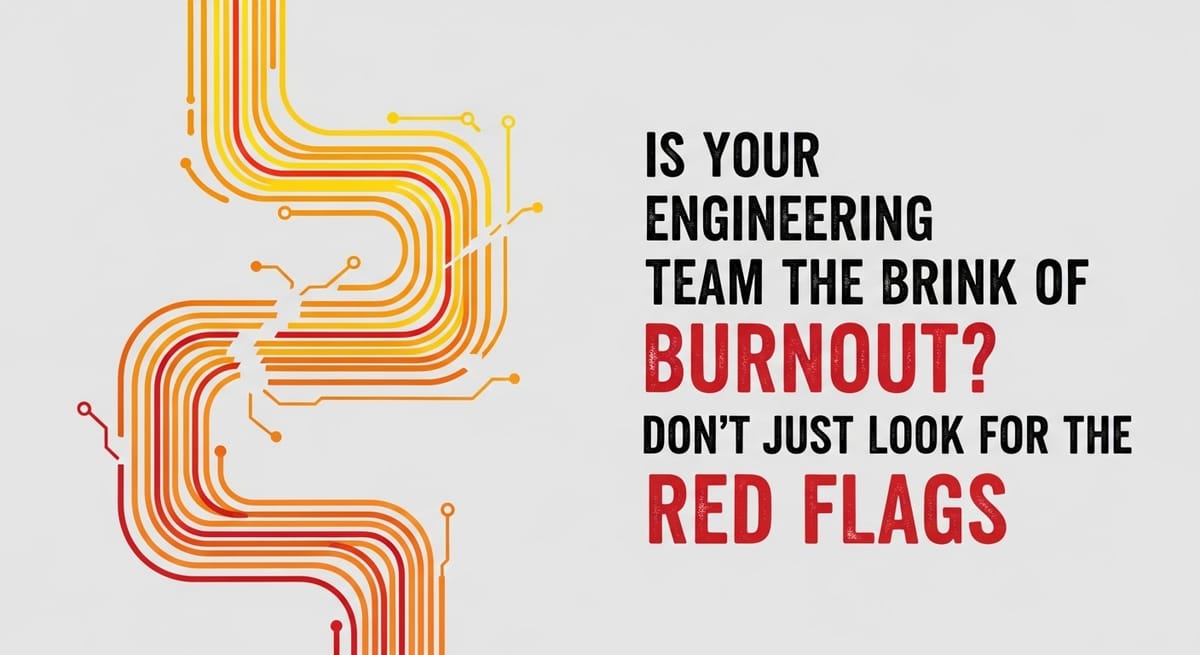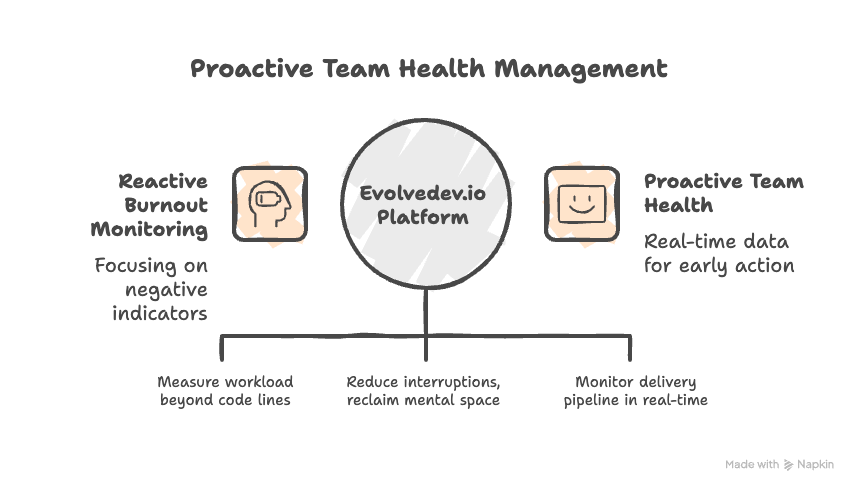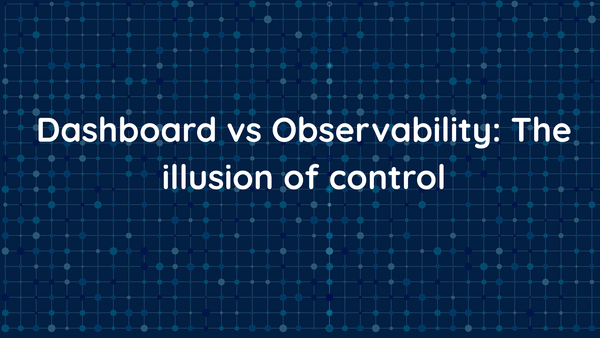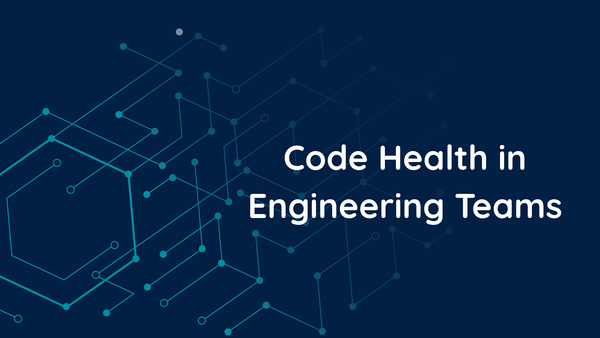Is Your Engineering Team on the Brink of Burnout? Don't Just Look for the Red Flags.

We've been using negative indicators, like a decline in output, missed deadlines, or an increase in bugs, to gauge the health of our teams for years. We've been told to start looking for the "burnout" in burnout.
However, what if we're not looking in the right place?
Focusing on what a healthy, thriving team looks like and measuring that is a better strategy than reactive firefighting. We actively seek the presence of "inverted burnout metrics," not just the absence of burnout.
This is the foundation of Evolvedev.io's philosophy. We think that engineering leaders can become proactive architects of team health rather than passive observers by monitoring the appropriate data.

Flipping the Script: The Metrics That Matter
- One developer may be committing less code, according to a conventional metric.
- They're constantly being interrupted or working on large, cumbersome pull requests that take ages to review, according to an inverted burnout metric.
You might assume they're disengaged based on the first observation. The second indicates that they are most likely overburdened.
Here's how we assist you in seeing the big picture:
- Going Beyond Code Lines: Measuring Sustainable Workload:
It's possible that the developer who has the most commits is also the one who is about to burn out. The Individual and Team Metrics dashboards from Evolvedev.io break through the clutter. We extract information from Jira and GitHub to display to you:
- Overwhelming number of tickets: Does one team member routinely handle more tickets than the others?
- Size of pull request: Are PRs getting bigger? This isn't a sign of slacking; it’s a signal that a developer might be rushing or not getting enough time for focused work, which can lead to technical debt and frustration down the line.
You can see exactly where your team's efforts are being spent with our Investment Dashboard, which goes even further. Spending 90% of a team's time fixing bugs while battling fires is a surefire way to burn out.
2. The Tax on Context-Switching:
Continuous interruptions are the worst thing for a developer's concentration. A major warning sign for burnout and a drain on deep work is the amount of time spent hopping between tasks and meetings.
You can see this invisible drain with the aid of our platform.We can assist you in comprehending the overwhelming amount of notifications and disruptions your team encounters by integrating with Slack and email.
You can reclaim the mental space your team needs to concentrate by combining important alerts with our Notification Manager. A significant decline in concentrated work time is a precursor to the fragmentation of your team's mental capacity.
3. Flow Health and Proactive Delivery
Work moves smoothly and steadily in a healthy team. By combining data from Jira and GitHub, our Delivery Dashboard allows you to see your delivery pipeline in real time and identify bottlenecks before they become serious issues.
- Is the "Code Review" phase taking too long? If pull requests are left unchecked for long stretches of time, we'll let you know. It's important to recognize that the team may be too overwhelmed to conduct timely reviews, not to place blame on any one individual.
- Is the frequency of your deployments declining? This is not an indication of indolence. It frequently indicates that the engineering process is failing, getting painful, or that the team is just too worn out to finish the job.
Evolvedev.io: Not Just a Surveillance Tool
At the end of the quarter, we don't want to develop another reporting tool that informs you that your team is exhausted. Its purpose is to provide you with the real-time, integrated data you require in order to spot minute changes in workload, concentration, and teamwork as they occur.
You can take action when it matters most by eschewing traditional metrics and adopting an inverted approach, which will maintain your team's long-term health, engagement, and productivity.





